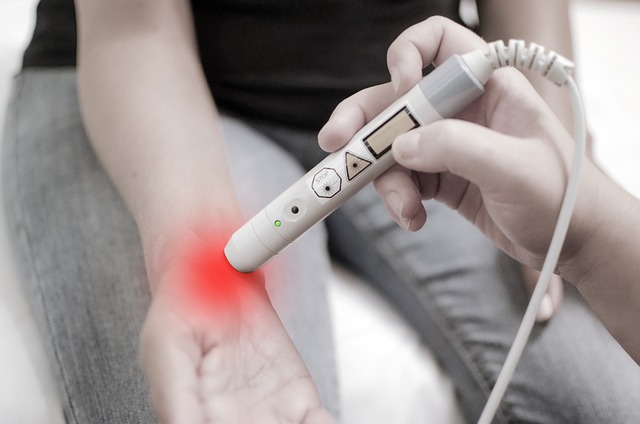Iodinated contrast agents (ICAs) are crucial in medical imaging, enhancing X-ray visibility and providing insights into blood vessels. Used in procedures like angiography, ICAs improve image quality by outlining vessel lumens, aiding in detecting anomalies and planning interventions. These agents revolutionize vascular imaging, enabling accurate diagnosis and treatment. However, they carry risks including allergic reactions and kidney damage, requiring careful assessment and monitoring by healthcare professionals.
“Explore the indispensable role of iodinated contrast agents in angiography, a crucial imaging technique for diagnosing blood vessel conditions. This article delves into the intricate properties and diverse applications of these agents, shedding light on how they enhance visualization and improve diagnostic accuracy. From understanding their unique capabilities to weighing safety considerations, we unravel the importance of iodinated contrast agents in modern medical practices, ensuring better patient outcomes.”
Understanding Iodinated Contrast Agents: Properties and Uses
Iodinated contrast agents (ICAs) play a pivotal role in angiography and blood vessel imaging, enhancing visibility and providing crucial diagnostic information. These agents are compounds that contain iodine, which has a high atomic number, making it readily visible on X-ray images. The primary function of ICAs is to improve the contrast between blood vessels and surrounding tissues during medical imaging procedures.
They possess unique properties that make them indispensable in various applications. First, their high density allows for clear visualization of blood flow and vessel structures. Additionally, they have a low toxicity profile, making them safe for use in humans when administered within recommended doses. ICAs are also selected based on their osmolality to ensure optimal compatibility with the body’s fluids and reduce potential side effects like renal impairment. Different types of ICAs target specific vascular conditions, such as those used in angiography, computed tomography (CT) scans, or magnetic resonance angiography (MRA), catering to diverse diagnostic needs.
Enhancing Angiography: How Contrast Media Improves Visualisation
Angiography, a critical technique in interventional radiology, relies on contrast media to enhance the visualisation of blood vessels and associated structures. Iodinated contrast agents, commonly used in this procedure, play a pivotal role by improving image quality and enabling accurate assessment of vascular anatomy. When administered intravenously, these agents selectively outline the lumen of blood vessels, providing a sharp contrast against the surrounding tissues.
This contrast enhancement is particularly valuable for detecting vascular anomalies, identifying strictures or occlusions, and planning interventional procedures like stent placement. By improving the signal-to-noise ratio in angiographic images, iodinated contrast agents facilitate precise identification of vessels, ensuring more effective diagnosis and treatment strategies.
The Role of Contrast in Diagnosing Blood Vessel Diseases
The introduction of contrast media, particularly iodinated contrast agents, has significantly enhanced the diagnostic capabilities in angiography and blood vessel imaging. Contrast agents play a pivotal role by improving the visibility of blood vessels and associated structures on medical imaging modalities such as X-ray angiography and CT scans. By absorbing X-rays at specific wavelengths, these agents create distinct patterns that highlight the arteries, veins, and capillaries, enabling radiologists to identify abnormalities with greater accuracy.
This enhanced contrast allows for the early detection of various blood vessel diseases, including atherosclerosis, where plaque buildup narrows the vessels, and aneurysms, which are dilated sections of a blood vessel at risk of rupture. Iodinated contrast agents also facilitate better visualization during interventional procedures, such as angioplasty and stent placement, ensuring precise navigation and treatment delivery.
Safety Considerations: Risks and Benefits of Contrast Media Use
Using iodinated contrast agents in angiography offers crucial insights into blood vessel health, enabling precise diagnosis and treatment planning. However, safety considerations are paramount. These agents, while essential for enhancing visibility, carry potential risks such as allergic reactions, kidney damage, and, in rare cases, severe anaphylaxis. The benefits of improved diagnostic accuracy and guided interventions must be balanced against these hazards. Healthcare professionals carefully weigh the risks and benefits before administering contrast media, ensuring informed consent from patients and close monitoring throughout procedures.
In conclusion, iodinated contrast agents play a pivotal role in angiography and blood vessel imaging, enhancing visualisation and enabling accurate diagnosis. Their unique properties allow for detailed analysis of vascular structures, aiding in the early detection and management of various diseases. While safety considerations exist, the benefits of using contrast media outweigh the risks when used appropriately. By understanding both the applications and potential drawbacks, healthcare professionals can leverage iodinated contrast agents effectively to improve patient outcomes.
